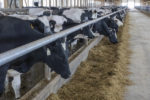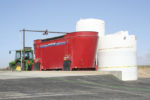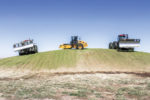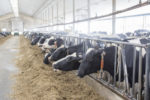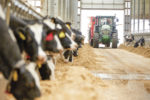- Topics
- News
- Blogs
- Podcasts
- Buyers Guide
- Magazine
- Advertise
Feed Management
Feeding a robotic milking herd may seem like a balancing act between what is fed at the bunk and in the box. Industry observations indicate consistency between both is the true driver of increased energy-corrected milk and components.
Read More
Create the five-star dining experience cows crave
Cows need the complete package when it comes to a great dining experience that will maximize feed intake to maximize milk components. Ration uniformity and feed availability are key factors in creating that perfect feeding environment.
Read More
Considerations for sizing a TMR mixer
Variables to consider when selecting a TMR mixer that is the right size for your operation to achieve optimal process efficiency and TMR uniformity.
Read More
Hot cows hate hot feed: How to prevent contamination and boost ROI
It is critical to understand the risks associated with unstable heating feed and take appropriate steps to minimize issues to maximize cow health and profitability.
Read More
Focus on feed hygiene for resilient cows
Steps to help minimize feed contamination on-farm and improve feed hygiene to limit a cow’s exposure to pathogens and toxins.
Read More
Reducing feed cost checklist
Lower feed costs by evaluating ingredient shrink, testing forages and ingredients, reviewing bunks, managing refusals, calculating weighbacks and auditing feed pushups with a camera.
Read More
Case study: Molasses-based DCAD leads to better TMR distribution and feedbunk management
In this on-farm case study, two “bad TMR samples” that had substantial variations accidentally demonstrated the distribution benefit of molasses-based liquid DCAD product in TMR.
Read More



